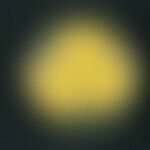HistoryThis section has been translated automatically.
Gruby, 1843
General definitionThis section has been translated automatically.
Anthropophilic dermatophyte. In Europe M. audouinii has largely lost its importance. In the past, M. audouinii was clinically and epidemiologically significant as a pathogen of the "orphanage disease" or "microspore of children's heads". Spontaneous remission sometimes occurs only during puberty.
Cultivation: Especially good from infected hairs.
You might also be interested in
Occurrence/EpidemiologyThis section has been translated automatically.
Especially in children, mostly in smaller epidemics. More common in Africa and Asia.
ManifestationThis section has been translated automatically.
Predilection sites: Capillitium in children.
Clinical pictureThis section has been translated automatically.
- Tinea capitis, microspores, tinea. Infestation of the hair, usually retroauricular, starting in the neck or at the back of the head.
- Infestation of the hair at the follicle orifice, downward growth of the mycelium in the hair to the keratinogenic zone and formation of a mosaic-like mantle of spores around the hair. Loss of elasticity and breakage of the hair.
MicroscopyThis section has been translated automatically.
- Comb hyphae, tennis racket hyphae, match hyphae.
- Microconidia: Rare, pear-shaped, single-chambered, lateral to the hyphae.
- Macroconidia: Rare, poorly developed, thick-walled, smooth-walled, irregular spindle shape with constrictions and sickle-shaped curves, length: 30-90 μm, width: 8-20 μm, 2-8 chambers.
- Chlamydospores: More often terminal than intercalated.
LiteratureThis section has been translated automatically.
- Elewski BE (2000) Tinea capitis: a current perspective. J Am Acad Dermatol 42: 1-20
- Hay RJ et al (2001) Tinea capitis in Europe: new perspective on an old problem. J Eur Acad Dermatol Venereol 15: 229-233
- Gilaberte Y et al (2003) Tinea capitis in a newborn infected by Microsporum audouinii in Spain. J Eur Acad Dermatol Venereol 17: 239-240
- Gupta AK, Summerbell RC (2000) Tinea capitis. Med Mycol 38: 255-287
- Larone DH (1995) in: Medically Important Fungi - A Guide to Identification, 3rd ed. ASM Press (Washington, D.C.)
- St-Germain G et al (1996) in: Identifying Filamentous Fungi - A Clinical Laboratory Handbook, 1st ed. Star Publishing Company (Belmont, California)
- Sutton DAAW et al (1998) in: Guide to Clinically Significant Fungi. 1st ed. Williams & Wilkins (Baltimore)
Disclaimer
Please ask your physician for a reliable diagnosis. This website is only meant as a reference.







